Chapter I: Urban Biking Safety
Negligent Design & Installation of Bike Share Stations Create Dangerous Pedestrian/Cyclist Pathways
Michael K. O’Donnell, Esq.*
Former NYC Mayor Bloomberg, while rejecting mandatory helmets for Citi Bike users at a press conference in June of 2012, stated: “The most important thing we can do is separate bicycle lanes from traffic, and that’s one of the things we’re really trying to do.” But the NYC DOT ignored that principle while designing and installing Citi Bike stations, leading to tragedy in October of 2013. Among other things, DOT design guidelines for on-street Citi Bike stations were implemented without any traffic studies designed to evaluate the impact that dropping bike stations in a parking lane would have on traffic flow and cyclist safety. Also, a long-standing engineering principle mandating the avoidance of wheel stop use in pedestrian pathways was ignored, even after the disregard of that principle throughout the Citi Bike share program had caused numerous pedestrian and cycling accidents and injuries. Consequently, in October 2013 a Citi Bike rider sought refuge from motor vehicle traffic in a protected pedestrian/cyclist pathway created by the installation of an on-street Citi Bike station at East 56th Street & Madison Avenue. After entering the protected space in that station, the cyclist struck an unpainted, heavy-duty concrete wheel stop installed adjacent to the crosswalk at the Madison Avenue end, causing an involuntary dismount that propelled him face-first onto the asphalt, inflicting traumatic brain injuries.
This is a cyclist’s view approaching that station from the east on 56th Street. Note that the station encroaches on the path of an approaching cyclist and the rider in the background is circumnavigating traffic by using the pathway within the station:
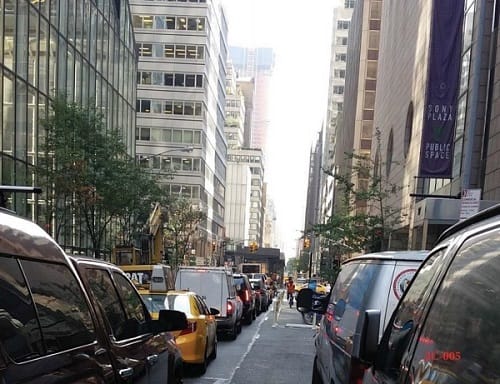
If only the NYC DOT and its contractors had performed a simple traffic study, they would have quickly learned what to many seemed perfectly obvious — that cyclists routinely use the pathways created by wide on-street station footprint configurations as protected bike lanes. Use of such a station pathway was particularly prevalent at 56th & Madison, where the width of the station envelope encroached upon the roadway space cyclists otherwise used to ride between the station and motor vehicle traffic, as seen in the photos above and below:
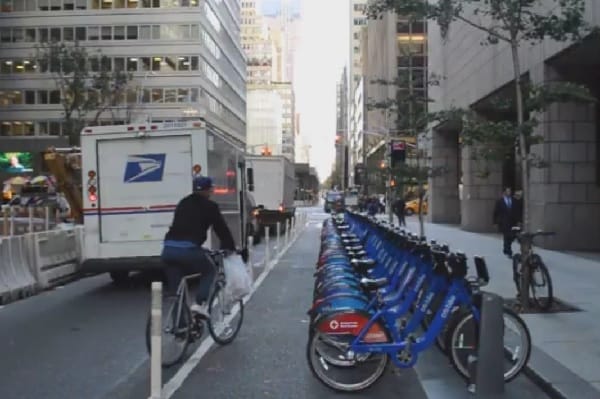
Such disregard for the safety of cyclists riding in these urban conditions led to the failure of the NYC DOT and its contractors to properly inspect station installations before their use by the public. The comparative photos below clearly illustrate how the installation of the on-street station with a narrower footprint (photos right), as was called for in the plan approved for the subject station, would have prevented a cyclist from using the station as a bike pathway and allowed safe passage between the station and vehicular traffic via use of the roadway, thereby avoiding any encounter with the station wheel stop placed near the crosswalk at Madison Avenue:
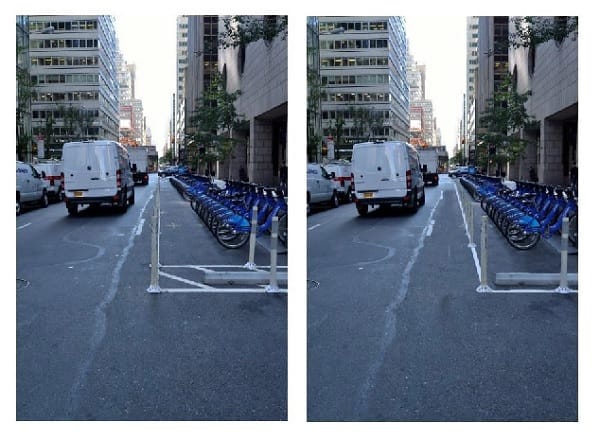
In fact, installation of the station as called for by its approved plan would have also eliminated the concrete wheel stop placed at the crosswalk, as illustrated by the comparative photos below:
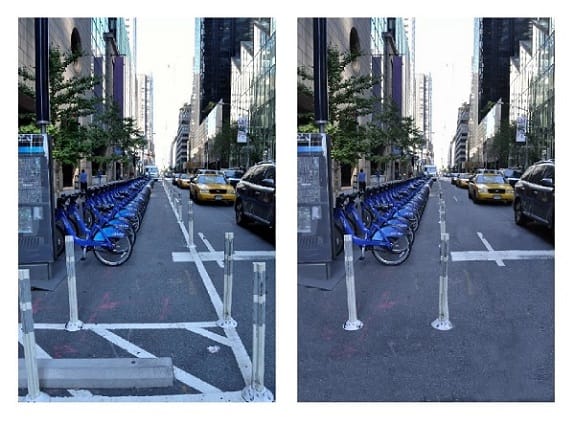
More troubling is the abject failure to consistently address cyclist safety with coordinated, uniform design standards throughout the Citi Bike system. For example, if only the on-street design used at a nearly identical midtown location on West 44th Street would have also been implemented at East 56th, that design would have also prevented the catastrophic October 2013 crash. On West 44th Street approaching 5th Avenue, the over 11-foot wide parking lane was eliminated, the station was installed within a new narrower 8-foot parking lane and the resulting extra roadway space was used to install a bike lane adjacent to the on-street Citi Bike station:
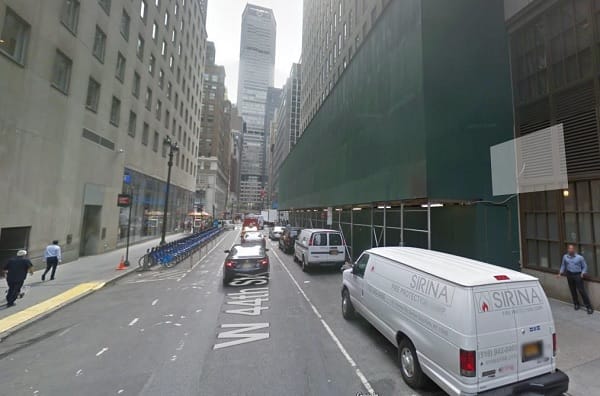
Yet more vexing is the failure of the NYC DOT to examine the safety of the 56th & Madison station even after it was the cause in October 2013 of the life-altering injury to a Citi Bike member. As a result, an identical bike crash at that station in September of 2014 was caused by the same station configuration and misplaced wheel stop.
What was the answer of the NYC DOT and Citi Bike to these safety gaffs that became part of a federal lawsuit? They claimed that cyclists must not ride within a Citi Bike station and moreover, any cyclist riding past the E. 56th Street & Madison Avenue station should have pitted flesh, blood and bone against chrome and steel, by taking the travel lane and riding among the motorized vehicles. Of course that post-litigation urban biking safety construct is in flagrant contravention of the most important mission announced by former Mayor Bloomberg and others in the hype leading up to the Citi Bike launch – to separate cyclists from traffic.
Stay tuned for:
Chapter II: Urban Biking Safety
Are The Unpainted Concrete Wheel Stops Used In Citi Bike Stations Hazardous?
* Of Counsel to the law firm of Edelman & Edelman P.C., Mr. O’Donnell’s practice includes Transportation related litigation.














